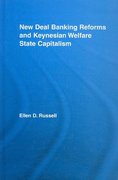Question 2 Consider the Solow growth model. Recall that upper-case variables denote aggegate variables and lower-case variables denote per worker [or per capita} variabla. Capital is assumed to evolve according to the following equation: K'=I+{1 d]|K, (1} where K' denct aggregate capital in the future period and K is capital in the current period. There is a closed-economy model without a government, so in a competitive equilibrium the income-expenditure identity is Y = U+I. {a} Use the income-expenditure identity and equation [1) to nd an expression for the evolution of per- worker capital. In other words, show that equation [1] can be rewritten as follows: r_ 33115:] {1dlk k _ 1+n + 1+n' (9} [b] Denote the steady-state level of capital per worker as In". Show that in the steady state, equation [2] implies the following equilibrium equation: azk\") = [n + on. (3} For the rest of this question, suppose there are two countries with an aggregate production function Y = zKD-3N-T. Further suppose the following values for the model's parameters: a = 0.25, d = Ill and n = [1.02 in both muntries. (c) Suppose 2,1. = 1 in Country A. Use equation {3) and the given values for the model's parameters and production function to calculate the steady-state level of income per capita, y}, and the steady-state level of capital per worker, in}, in Country A. (d) Suppose 23 = 2 in Country B, but otherwise the countries are equivalent. Because 23 :5 2,4, Country B will have a higher standard of Living {i.e., per capital income} in the initial period. In the long run, will Country A ever converge with Country E in terms of per capita income? Explain your answer. {e} How is the Solow model inconsistent with the growth fact that there is no correlation between the level of output per capita in 1960 and the average growth rate in output per capita since that time?I 3. The table below shows unemployment and labor force statistics for an economy. Actual rate of unemployment 3% Natural rate of unemployment 4% Population of the country 125 million Number of people employed 97 million Number of people unemployed 3 million Number of people employed part time 5 million Number of discouraged workers 2 million a. Calculate the size of the labor force. b. Calculate the labor force participation rate. Show your work. c. Given the state of the economy described in the table, is actual real output less than, greater than, or equal to potential real output? Explain. d. Calculate what the cyclical unemployment rate would be if the actual rate of unemployment increased to 5 percent. Show your work. e. Suppose discouraged workers reenter the labor force and find employment. Will the actual rate of unemployment increase, decrease, or stay the same?1) The estimated Canadian processed pork demand and supply functions are as the follow- ings: Qp = 100-3 p + 3 /s + 5 p + 2Y, Q = 100 +6 p - 8/ where Q is the quantity in million kilograms (kg) of pork per year; p is the dollar price per kg. pe is the price of beef per kg, pe is the price of chicken per kg, pa is the price of hogs per kg, and Y is the average income in thousand dollars. Suppose that ps = $8.00 per kg, p. = $6.00 per kg, p; = $4 per kg, and 1 = $11. Answer the following questions. (Note that you need to show your calculations and explain your results to receive full credit!) a) Assuming ceteris paribus, calculate price elasticity of supply and demand at the equilib rium price and quantity under the conditions stated in above and explain your results. Are the demand and supply at equilibrium elastic? Explain. b) Using the price elasticity of demand, calculate how much the price would have to rise for consumers to demand 28 fewer million kg than the equilibrium quantity? c) What is the income elasticity of demand at the market equilibrium quantity, where Y=$1 1? Is pork a normal good? Assuming all else unchanged, if the average income increases by 20%, what would be the expected change in the demand for pork? d) If the demand function (Qp = 100 -3 p + 3 / + 5 p + 2 Y) is then re-estimated using3. The table below shows unemployment and labor force statistics for an economy. :1. Calculate what the cyclical unemployment rate would be if the actual rate of unemployment increased to 5 percent. Show your work. e. Suppose discouraged workers reenter the labor force and nd employment. Will the actual rate of unemployment increase, decrease, or stay the same










